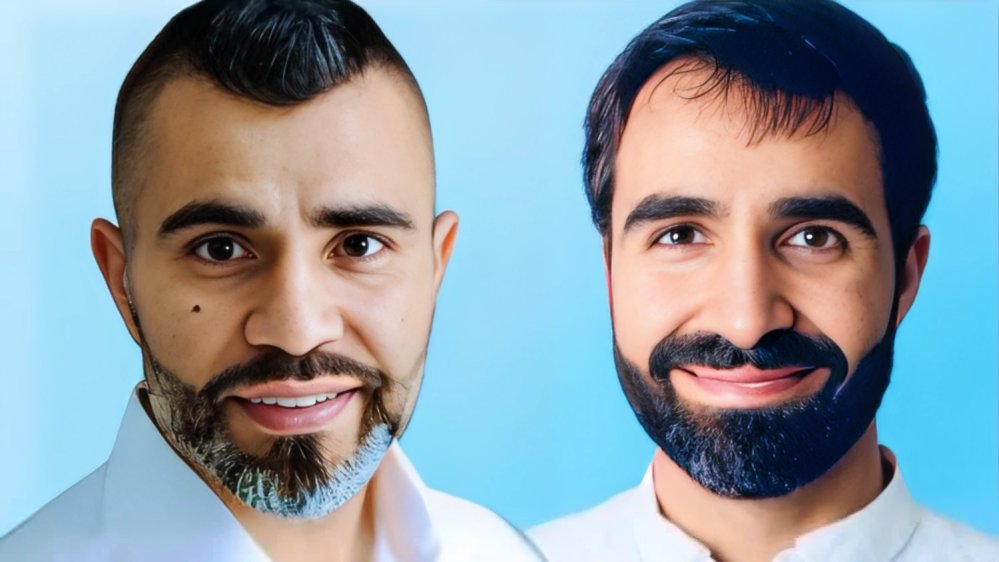Oncology Brothers shared a post on X:
“SABCS24 Day 3 Highlights
1. EUROPA: ET vs XRT HR+ ≥70 yrs
2. PATINA: CDK4/6i HR+ HER2+ new SoC
3. COMET: DCIS
4. SUPREMO: XRT post mastectomy
5. INSEMA: ALNBx early disease.”
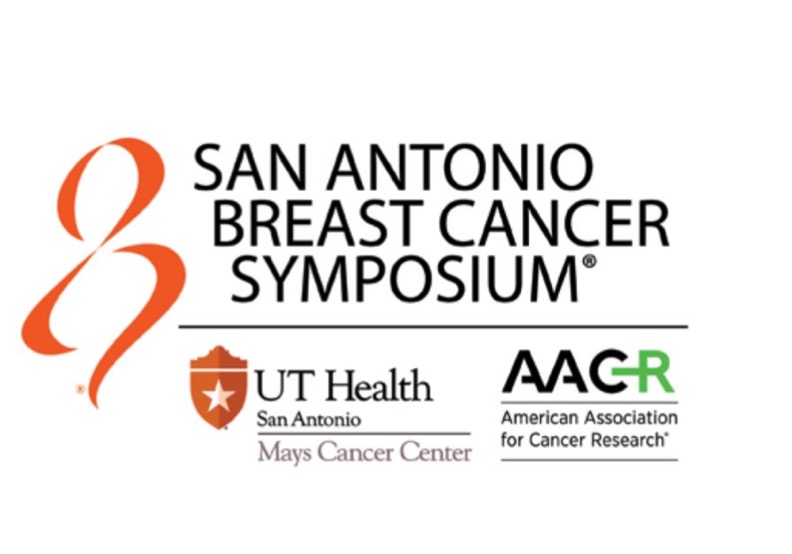
“EUROPA: Ph III, ET vs XRT after surgery in ≥70 yrs HR+ luminal A-like early breast cancer. Median F/U: 2 years
– Treatment-related AEs with XRT (67% vs 85%)
– ET was associated with a greater reduction in HRQOL but we need longer data for disease control.”
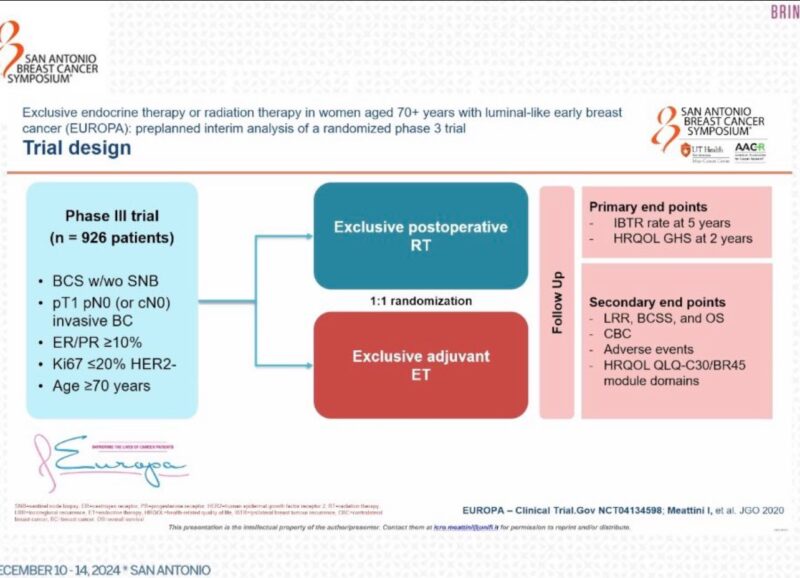
Quoting Jennifer Plichta’s post below:
“Consider radiation or endocrine tx alone! SABCS24 > Single-modality endocrine therapy versus radiotherapy after breast-conserving surgery in women aged 70 years and older with luminal A-like early breast cancer (EUROPA): a preplanned interim analysis.”
“PATINA: Ph 3, palbociclib + Anti-HER2 + ET vs. anti-HER2 + ET after induction chemo for HR+ and HER2+ MBC:
– mPFS of 44.3mos with Palbo vs 29.1mos SoC (HR: 0.74)
– OS not mature yet – New SoC for HR+ HER 2+ MBC.”
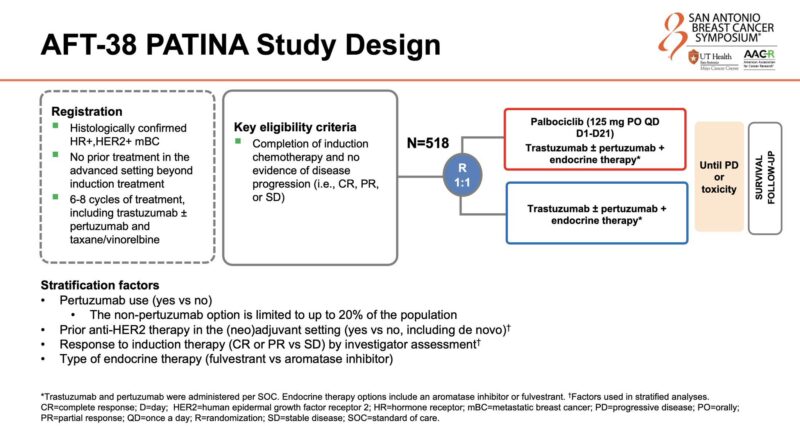
Quoting Erika Hamilton’s post below:
“Wow, PATINA shows 15 month improved PFS in 1st line HER-2 when palbociclib is added to ET +HER-2 antibodies in maintenance 1st line setting after chemo induction.”
“COMET: Ph 3, Active Monitoring With or Without ET for Low-Risk DCIS (HR+, Gr 1 or 2):
– Rate of ipsilateral invasive cancer 5.9% in the ET vs 4.2% in the active monitoring group
– At 2 years (short-term): active monitoring is not inferior to guideline-concordant care.”
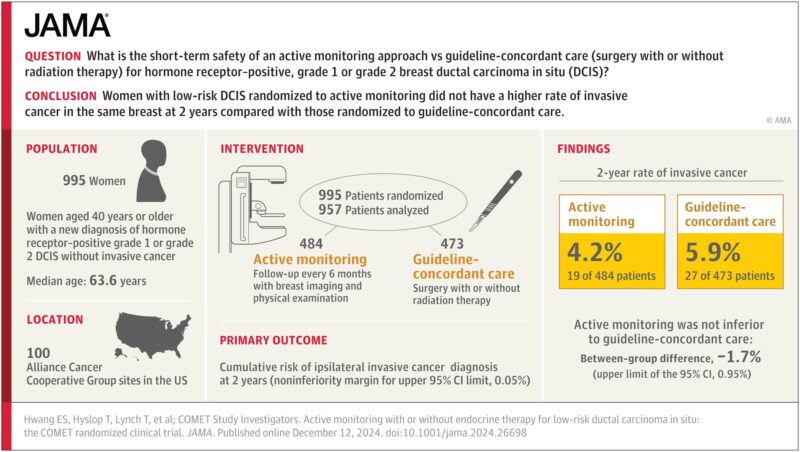
Quoting Moffitt Cancer Center’s post below:
“Latest from SABCS24: Eun-Sil Hwang, MD, presents early oncologic outcomes from the COMET study on active monitoring vs. surgery (+/- radiation) for low-risk DCIS. Key findings:
1. At 2 years, invasive cancer rate: 5.9% (GCC) vs. 4.2% (AM), with AM non-inferior to GCC.
2. Per protocol analysis showed AM superior: 8.7% (GCC) vs. 3.1% (AM).
3. Invasive cancer characteristics (size, node status, grade) similar between groups. Conclusion: Active monitoring is a viable option for low-risk DCIS, potentially reducing overtreatment without compromising outcomes.”
“SUPREMO: Selective Use of Postoperative Radiotherapy after Mastectomy:
– pT1N1M0, pT2N1M0, pT3N0M0, or pT2N0M0 Gr3 or LVI
– No 10 years survival with XRT after mastectomy.”
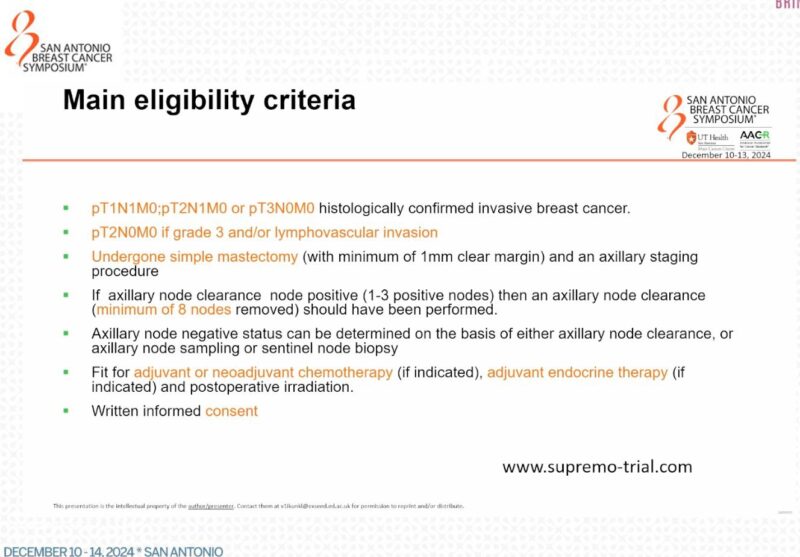
Quoting Stephanie Graff’s post below:
“SUPREMO—post mastectomy radiation in moderate risk breast cancer—does not improve OS, DMFS, and had only an insignificant reduction in 10-yr chest wall recurrence (<2%).”
“INSEMA: Omission of axillary surgery for SLNBx with clinically N-ve invasive breast cancer staged T1/T2 (≤5 cm) scheduled to undergo breast-conserving surgery.
– 5 year iDFS 91.9% without surgery vs 91.7%
– Omission of surgical axillary staging was noninferior to SLNBx.”
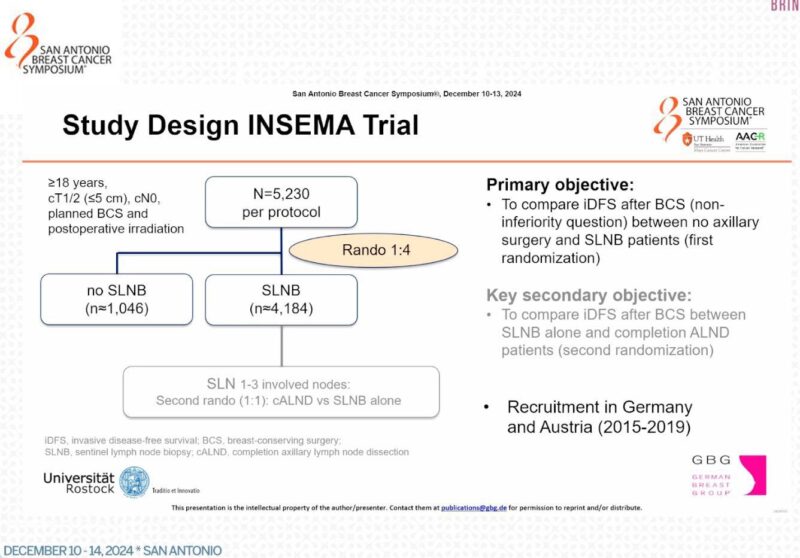
Quoting Sara Tolaney’s post below:
“INSEMA: SLNB vs no SLNB
iDFS events 91.7% vs 91.9% , n=4858
5year OS :96.9 vs 98.2%
Omitting SLNB in pts with early breast cancer and cN0 and s/f breast-conserving tx did not result in inferior outcome.”
Drs. Rohit Gosain and Rahul Gosain (aka Oncology Brothers), are medical oncologists/hematologists. Through their social media platforms like X/Twitter, they actively engage with their audience. With their own YouTube channel and podcast, they provide accessible resources for cancer patients and their families. Additionally, their participation in live conferences ensures that cancer patients receive the best care closer to home, reflecting their commitment to advancing oncology and improving patient outcomes through education and outreach.
Erika Hamilton is a medical oncologist and the Director of Breast Cancer Program at Sarah Cannon Research Institute (USA). Dr. Hamilton is a past chair of ASCO’s Scientific Breast Committee ’21-’22, participant of the ASCO Leadership Development Program, Associate Editor for Clinical Breast Cancer, co-chair for Great Debates and Updates in Women’s Oncology Conference and a board member of the Susan G. Komen Foundation of Central Tennessee. She is active in the community, volunteering with Gilda’s Club Middle Tennessee, the American Cancer Society’s Hope Lodge, Ovarcome ovarian cancer support organization, Brentwood Baptist Church and the Susan G. Komen Race for the Cure.
Sara Tolaney is the Chief of the Division of Breast Oncology at Dana-Farber Cancer Institute. She also serves as Associate Director of the Susan F. Smith Center for Women’s Cancers and is a Senior Physician at Dana-Farber Cancer Institute and Associate Professor of Medicine at Harvard Medical School. Her research focuses on the development of novel therapies in the treatment of breast cancer and developing more effective and less toxic treatment approaches.
Her work has demonstrated that a relatively low risk regimen is beneficial in women with early stage node-negative HER2-positive cancers, and this works has been incorporated into national and international guidelines. She has developed several follow-up studies looking at novel approaches to early stage HER2-positive disease and has also played a significant role in development of cdk 4/6 inhibitors, antibody drug conjugates, and immunotherapy in breast cancer. She is the author of over 150 peer-reviewed publications in leading scientific journals. She is the recipient of the Lee M Nadler “Extra Mile” Award, and the Innovation Award for Clinical Faculty.
Stephanie Graff is the Director of Breast Oncology at Brown University Health and an Associate Professor of Medicine at Brown University’s Legorreta Cancer Center. She also serves as the Director of Breast Oncology at Lifespan and is a Medical Advisor for the Dr. Susan Love Foundation for Breast Cancer Research.She is an Associate Editor of Cancer Medicine, and chairs the editorial board of Oncology Times.
